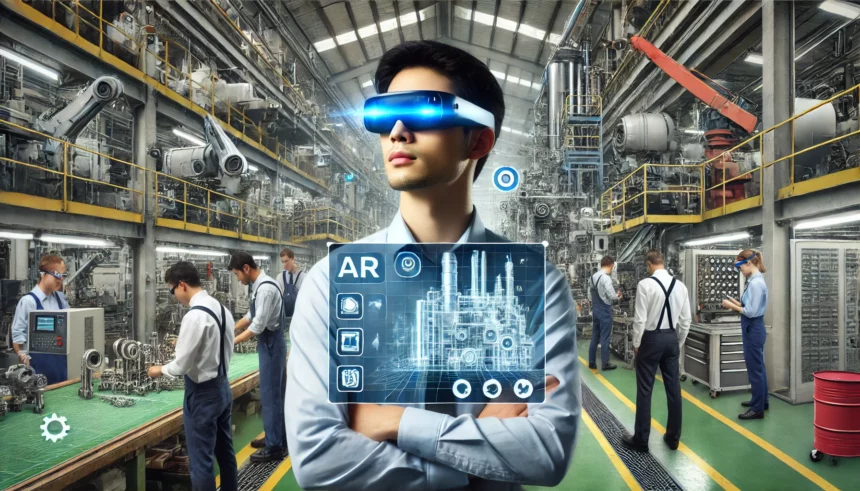Augmented Reality (AR) is revolutionizing business practices across various sectors, enhancing operational efficiency and productivity. This technology is proving integral from manufacturing to customer engagement.
Enhancing Productivity with AR
HoloLight’s whitepaper, ‘AR as a Booster for Industry 4.0,’ outlines how AR is transforming businesses by improving quality and productivity along their production chains. By integrating digital information directly into physical workspaces, AR enables precise and efficient operations. In manufacturing, for example, AR can project detailed instructions onto equipment, guiding workers through complex procedures and reducing the margin for error. This not only accelerates processes but also improves product quality. Read more about manufacturing enhancements.
Strategic AR Adoption
Adopting AR strategically is crucial for maximizing its benefits. Companies should explore how AR can enhance their products and services to improve user interactions and increase customer loyalty. This involves a critical decision: develop AR expertise in-house or collaborate with external experts. While in-house development offers customization, partnering with AR specialists like HoloLight provides immediate access to advanced technologies and expertise, speeding up AR integration and innovation. Strategies for AR adoption.
Partnering with HoloLight for AR Excellence
Choosing the right AR partner is vital for businesses ready to harness this technology. HoloLight specializes in industrial AR applications, providing solutions that streamline business operations from product design to maintenance. Their innovative tools integrate digital data with the physical world effectively, making operations simpler and more intuitive, which enhances productivity and helps maintain a competitive edge in dynamic markets. Explore HoloLight’s AR technologies.
By integrating AR, companies are not just adopting new technology—they are entering a future where digital and physical realities merge, creating more efficient, dynamic, and user-friendly workplaces.
By adopting Augmented Reality (AR), companies can significantly enhance their operational processes, leading to a revolution in efficiency and productivity. AR not only facilitates a more immersive and interactive work environment but also helps in reducing costs and downtime by streamlining complex procedures. This technology enables businesses to respond swiftly to changing market demands and customer needs, thereby increasing their agility and competitive edge.
As we look towards the future, the scope for AR in business is bound to expand. The integration of AR with other emerging technologies like Artificial Intelligence (AI) and the Internet of Things (IoT) could unlock new potentials for innovation. For instance, combining AR with AI can lead to smarter decision-making tools, while integration with IoT devices can enhance monitoring and maintenance processes, providing a holistic view of operations in real-time.
Furthermore, as AR technology continues to evolve, it will become more accessible to a wider range of industries, not just those traditionally associated with high-tech. Sectors such as healthcare, education, and retail are already beginning to see the benefits of AR applications, from training and simulations to enhancing customer experiences.
In conclusion, the strategic implementation of AR can transform businesses by not only optimizing current processes but also by opening doors to new opportunities and innovations. Companies that are early adopters of this technology will likely find themselves at the forefront of their industries, ready to navigate the challenges of the future with greater ease and efficiency. The journey towards digital transformation with AR is not just about technology adoption but about reimagining how businesses operate in the digital age.
















